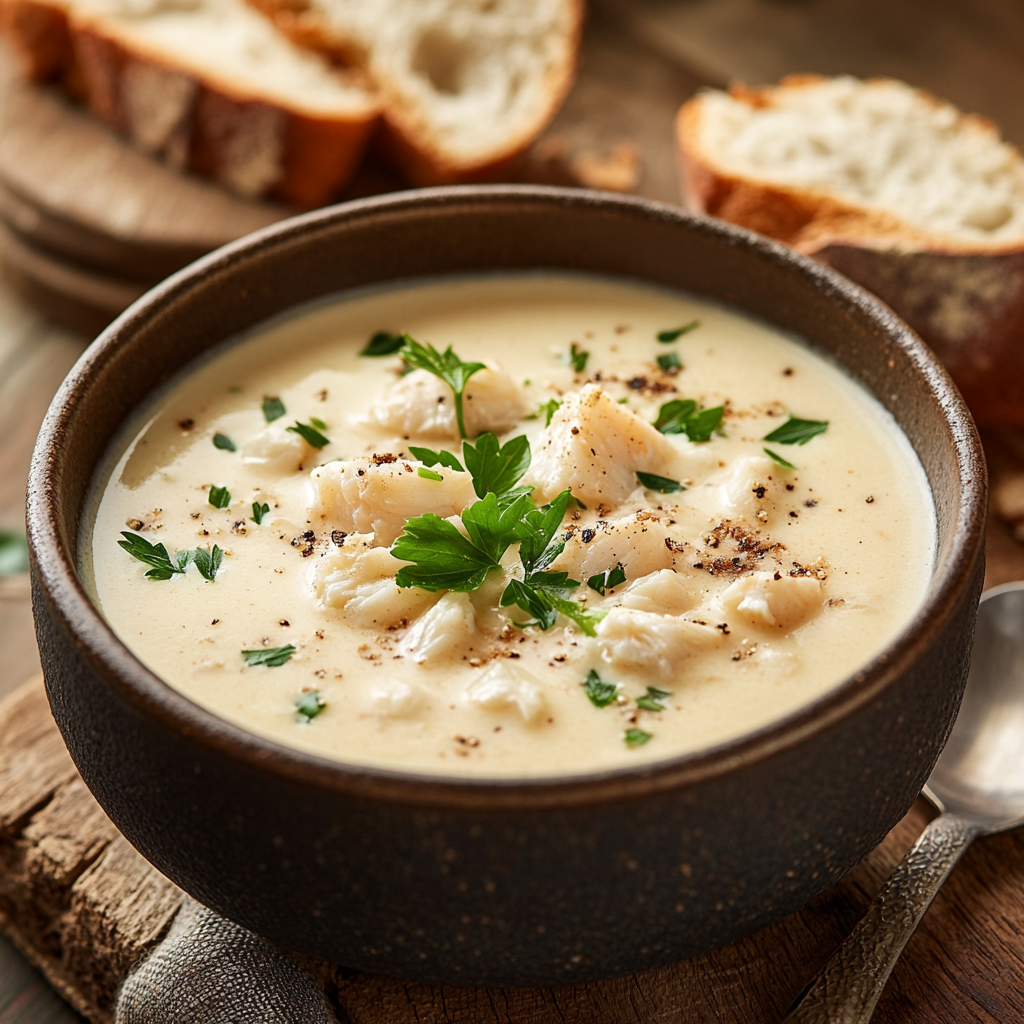Crab soup is a delightful and comforting dish that showcases the rich flavors of crab meat. Whether you’re a fan of Maryland crab soup or prefer the creamy indulgence of she-crab soup, this versatile dish offers a taste of coastal cuisine right in your own kitchen. In this comprehensive guide, we’ll explore the history, ingredients, and various recipes for crab soup, ensuring you can create a perfect bowl every time.

History and Origin of Crab Soup
Crab soup has a rich history, particularly in regions like Maryland and South Carolina. Maryland crab soup is a staple, often featuring a tomato base and a blend of vegetables and spices. The use of Old Bay seasoning is a hallmark of this regional favorite, adding a unique blend of flavors that complement the crab meat perfectly. For a taste of authentic Maryland-style crab soup, you can refer to recipes like those found on Sugar Spun Run, which emphasize the importance of fresh ingredients and traditional techniques.
In South Carolina, she-crab soup is a beloved dish known for its creamy texture and the addition of crab roe, which gives it a distinctive flavor and color. This soup is a testament to the region’s culinary heritage and is often enjoyed as a special treat. For an authentic she-crab soup recipe, you can explore resources like Allrecipes, which provide detailed instructions and tips for achieving the perfect consistency.
The origins of crab soup can be traced back to the coastal communities where crabbing is a way of life. These regions have developed unique culinary traditions that highlight the fresh seafood available locally. Maryland’s crab soup, for instance, is deeply rooted in the state’s crabbing industry, with blue crab being the star ingredient. The soup is often enjoyed during crab feasts and community gatherings, where families and friends come together to enjoy the fruits of the Chesapeake Bay.
Similarly, South Carolina’s she-crab soup has its own unique story. The name “she-crab” comes from the use of female crabs, which were traditionally believed to have sweeter meat and roe that added a rich, briny flavor to the soup. This delicacy was often served in upscale restaurants and has become a symbol of the state’s coastal cuisine.
Ingredients Overview
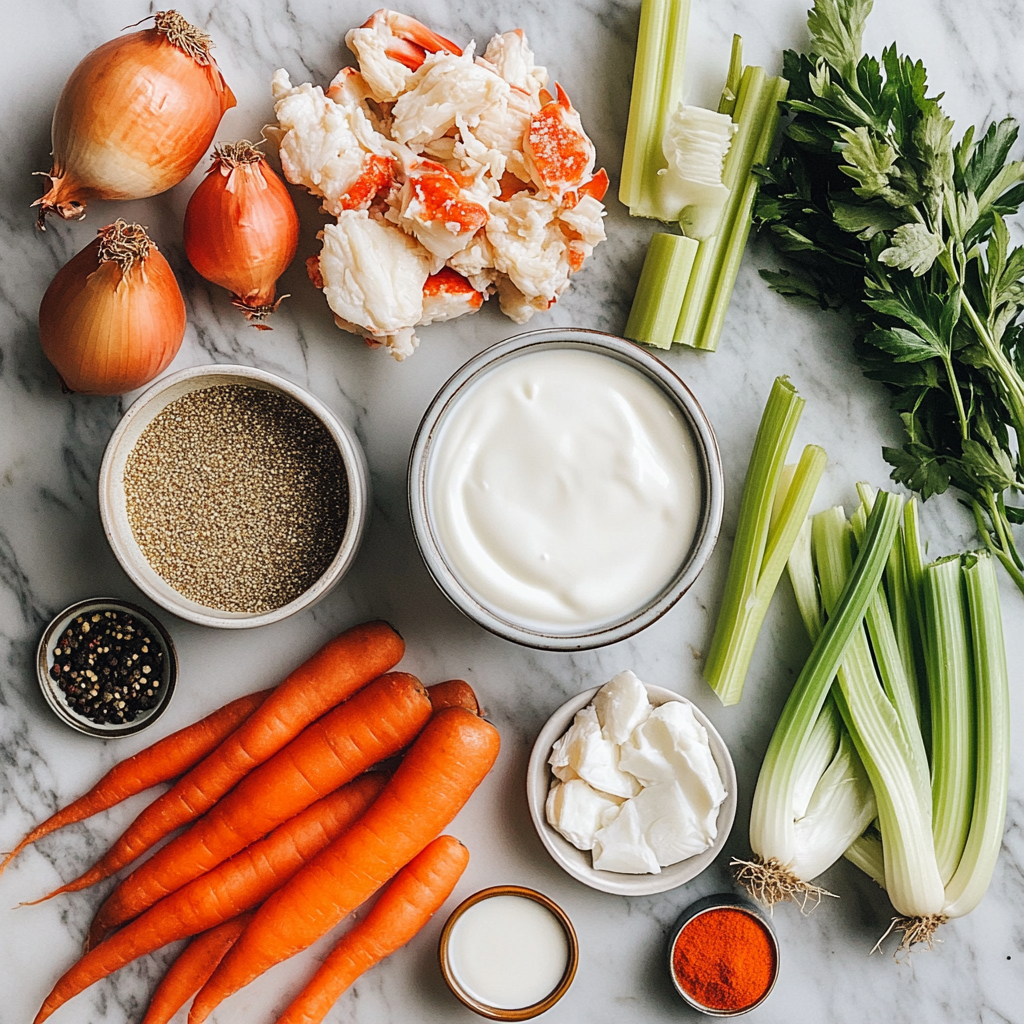
Creating a delicious crab soup begins with selecting the right ingredients. Here are the key components you’ll need:
-
Fresh Crab Meat: The star of the dish, fresh crab meat offers a tender texture and sweet flavor. Opt for lump crab meat or a mix of lump and claw meat for the best results. Fresh crab meat can be sourced from local seafood markets or the seafood counter at your grocery store. It’s important to choose crab meat that is fresh and has a pleasant ocean scent. Avoid any crab meat that has an ammonia-like odor, as this indicates spoilage.
-
Old Bay Seasoning: A classic blend of spices that enhances the flavor of seafood dishes. It’s a must-have for authentic Maryland-style crab soup. Old Bay seasoning is a blend of 18 different spices, including celery salt, paprika, and mustard. It was created in the 1930s by a German immigrant named Gustav Brunn, who settled in Baltimore, Maryland. The seasoning quickly became a staple in Maryland cuisine and is now synonymous with seafood dishes in the region.
-
Vegetables: Onions, celery, and carrots form the base of the soup, adding depth and texture. You can also include potatoes, corn, or peas for a heartier version. When selecting vegetables, choose fresh, firm produce. The vegetables should be chopped uniformly to ensure even cooking. For a deeper flavor, consider sautéing the vegetables in butter before adding them to the soup.
-
Broth or Stock: Seafood stock or beef broth provides a rich foundation for the soup. Chicken broth can be used as a substitute but may not offer the same depth of flavor. When choosing a broth or stock, opt for low-sodium varieties to control the saltiness of the soup. You can also make your own seafood stock by simmering shrimp shells, crab shells, or fish bones with water, onions, carrots, and celery.
-
Cream and Milk: These ingredients add creaminess and richness to the soup. Heavy cream is often used in cream of crab soup and she-crab soup recipes. For a lighter version, you can use half-and-half or a combination of milk and cream. To reduce calories, use low-fat milk or a combination of milk and broth instead of heavy cream.
Types of Crab Meat
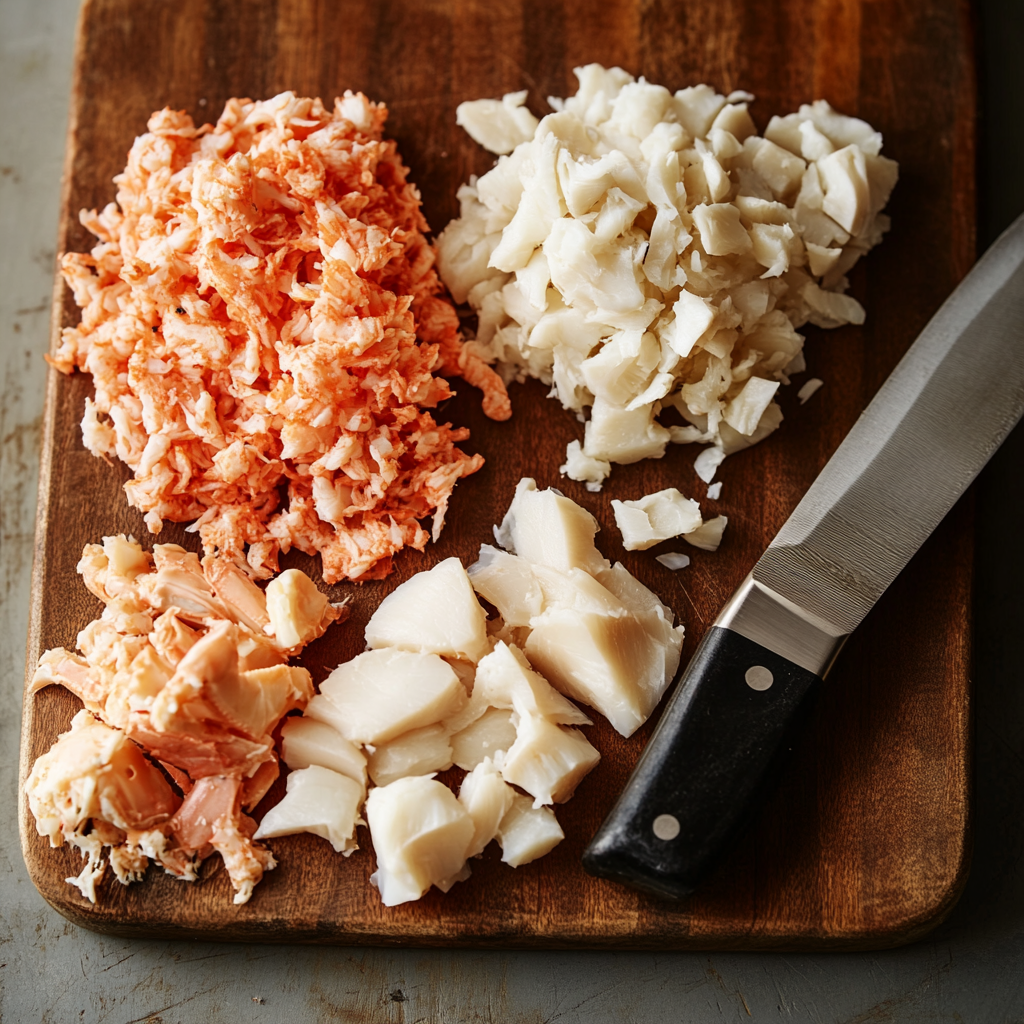
Understanding the different types of crab meat can help you choose the best option for your soup:
-
Lump Crab Meat: Known for its tender texture and sweet flavor, lump crab meat is ideal for soups where you want visible chunks of crab. Lump crab meat comes from the body of the crab and is prized for its delicate taste. It’s perfect for garnishing soups or adding to dishes where you want the crab meat to be the star.
-
Claw Meat: Darker in color and slightly stronger in flavor, claw meat is a great option for adding depth to your soup. Claw meat comes from the claws of the crab and has a more robust flavor than lump crab meat. It’s ideal for adding to soups and stews where you want a more pronounced crab flavor.
-
Jumbo Lump Crab Meat: The most prized variety, jumbo lump crab meat offers large, intact pieces that are perfect for garnishing your soup. Jumbo lump crab meat comes from the two largest muscles connected to the swimming legs of the crab. It’s the most expensive type of crab meat but offers a luxurious texture and flavor.
-
Canned vs. Fresh Crab Meat: Fresh crab meat is preferred for its superior flavor and texture, but canned crab meat can be used in a pinch. Avoid imitation crab meat, as it lacks the authentic taste and texture of real crab. Imitation crab meat is made from processed fish and does not have the same nutritional benefits as real crab meat.
Essential Spices and Seasonings
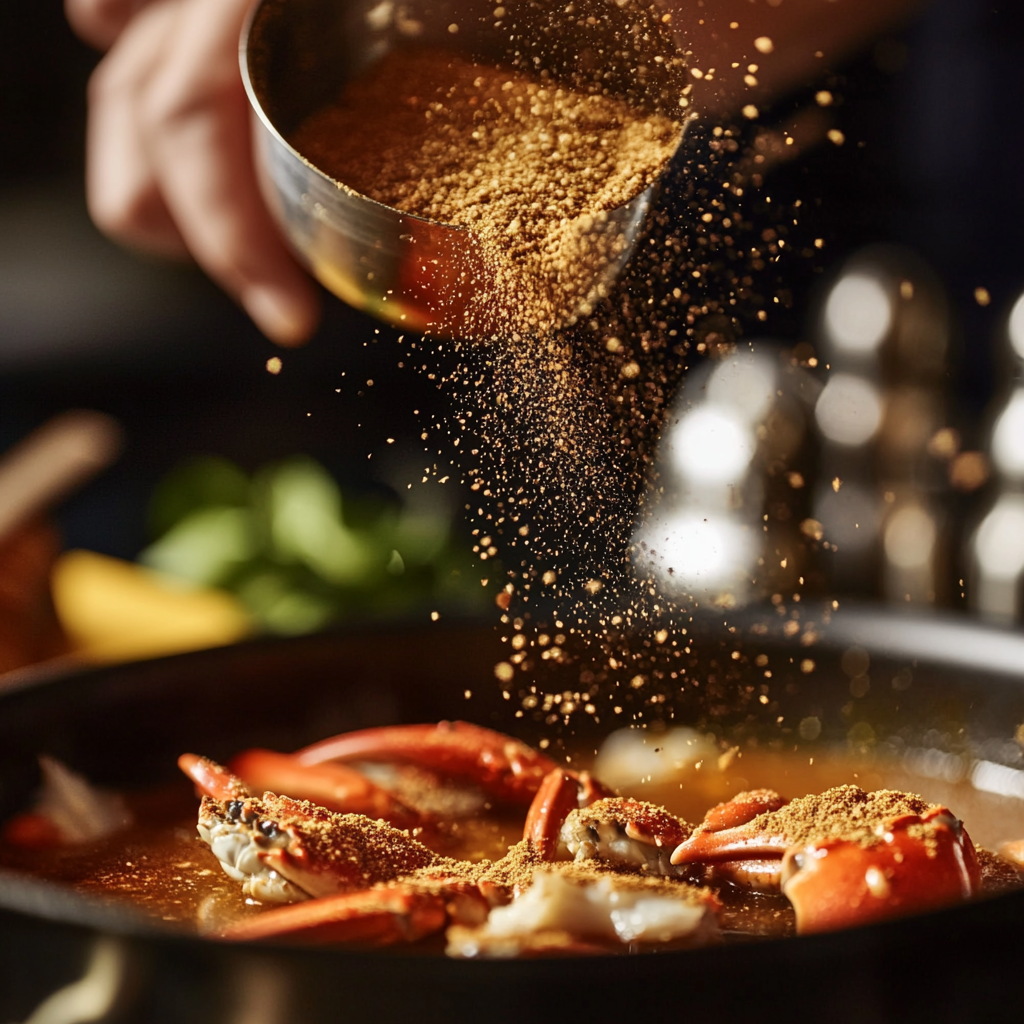
The right spices and seasonings can elevate your crab soup to new heights:
-
Old Bay Seasoning: A blend of 18 spices, including celery salt, paprika, and mustard, Old Bay is essential for authentic crab soup flavor. Old Bay seasoning was created in the 1930s by Gustav Brunn, a German immigrant who settled in Baltimore, Maryland. The seasoning quickly became a staple in Maryland cuisine and is now synonymous with seafood dishes in the region.
-
Worcestershire Sauce: Adds a complex blend of sweet, savory, and tangy notes to the soup. Worcestershire sauce is a fermented liquid seasoning made from a base of vinegar and flavored with anchovies, molasses, tamarind, onion, garlic, and other seasonings. It originated in the city of Worcester, England, in the 19th century and has since become a popular condiment worldwide.
-
Dijon Mustard: Provides a subtle kick and enhances the other flavors in the soup. Dijon mustard is a type of prepared mustard that originated in the city of Dijon, France. It is made from brown mustard seeds and white wine, giving it a sharp, tangy flavor. Dijon mustard is a versatile condiment that can be used in a variety of dishes, from sandwiches to sauces.
-
Hot Sauce and Red Pepper Flakes: For those who prefer a spicier soup, these ingredients can add the perfect amount of heat. Hot sauce is a chili sauce made from chili peppers and other ingredients, such as vinegar, water, sugar, and salt. Red pepper flakes are made from dried and crushed red chili peppers and can be used to add a spicy kick to dishes.
Classic Maryland Crab Soup Recipe
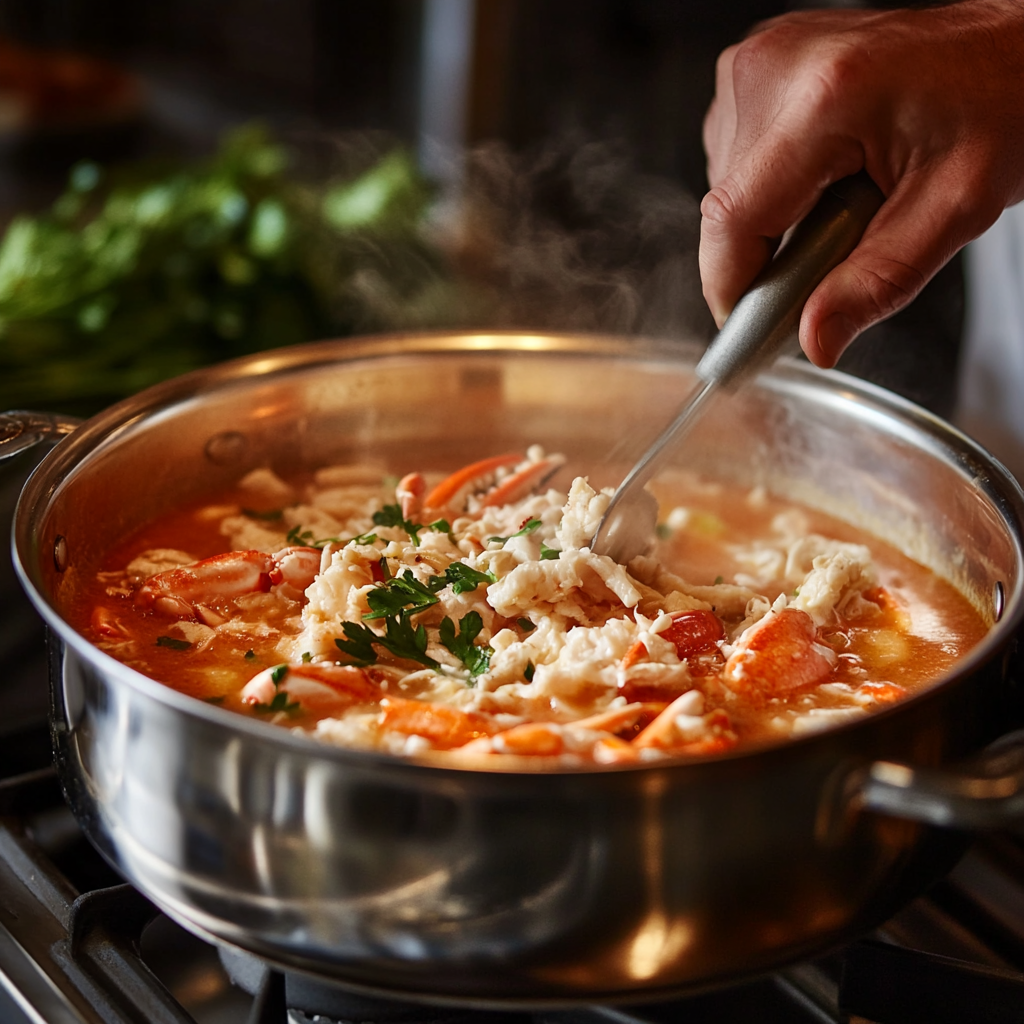
Here’s a step-by-step guide to making classic Maryland crab soup:
-
Sauté the Vegetables: In a large pot, sauté onions, celery, and carrots until softened. Sautéing the vegetables in butter or oil helps to develop their flavors and creates a base for the soup. Cook the vegetables over medium heat until they are tender and slightly translucent.
-
Add Spices: Stir in Old Bay seasoning, Worcestershire sauce, and any other desired spices. Adding the spices early in the cooking process allows their flavors to meld with the other ingredients in the soup. You can also add a bay leaf or two for extra flavor, but be sure to remove them before serving.
-
Simmer the Broth: Add your choice of broth or stock and bring to a simmer. Simmering the broth allows the flavors to concentrate and intensify. You can also add a splash of white wine or sherry to the broth for added depth of flavor.
-
Add Crab Meat: Gently stir in the crab meat and simmer until heated through. Adding the crab meat towards the end of cooking prevents it from becoming tough and rubbery. Be sure to stir the soup gently to avoid breaking up the delicate lumps of crab meat.
-
Serve: Ladle the soup into bowls and garnish with fresh parsley or chives. You can also serve the soup with oyster crackers or crusty bread for dipping. For a heartier meal, pair the soup with a side salad or a grilled cheese sandwich.
Cream of Crab Soup Recipe
For a creamier version, try this cream of crab soup recipe:
-
Create a Roux: Melt butter in a pot and whisk in flour to create a roux, which will thicken the soup. A roux is a mixture of fat and flour that is used to thicken sauces, soups, and stews. Cook the roux over medium heat until it is lightly golden and has a nutty aroma.
-
Add Vegetables: Sauté onions, celery, and garlic until softened. Adding the vegetables to the roux helps to develop their flavors and creates a base for the soup. Cook the vegetables over medium heat until they are tender and slightly translucent.
-
Stir in Liquids: Gradually add milk and cream, stirring constantly to prevent lumps. Adding the liquids gradually helps to prevent the formation of lumps in the soup. You can also use a whisk to help incorporate the liquids into the roux.
-
Season: Add Old Bay seasoning, Worcestershire sauce, and Dijon mustard. These seasonings add depth of flavor to the soup and complement the sweetness of the crab meat. You can also add a pinch of cayenne pepper or hot sauce for a spicy kick.
-
Add Crab Meat: Gently stir in the crab meat and simmer until heated through. Adding the crab meat towards the end of cooking prevents it from becoming tough and rubbery. Be sure to stir the soup gently to avoid breaking up the delicate lumps of crab meat.
-
Serve: Garnish with fresh chives or a drizzle of sherry. You can also serve the soup with oyster crackers or crusty bread for dipping. For a heartier meal, pair the soup with a side salad or a grilled cheese sandwich.
She-Crab Soup Recipe
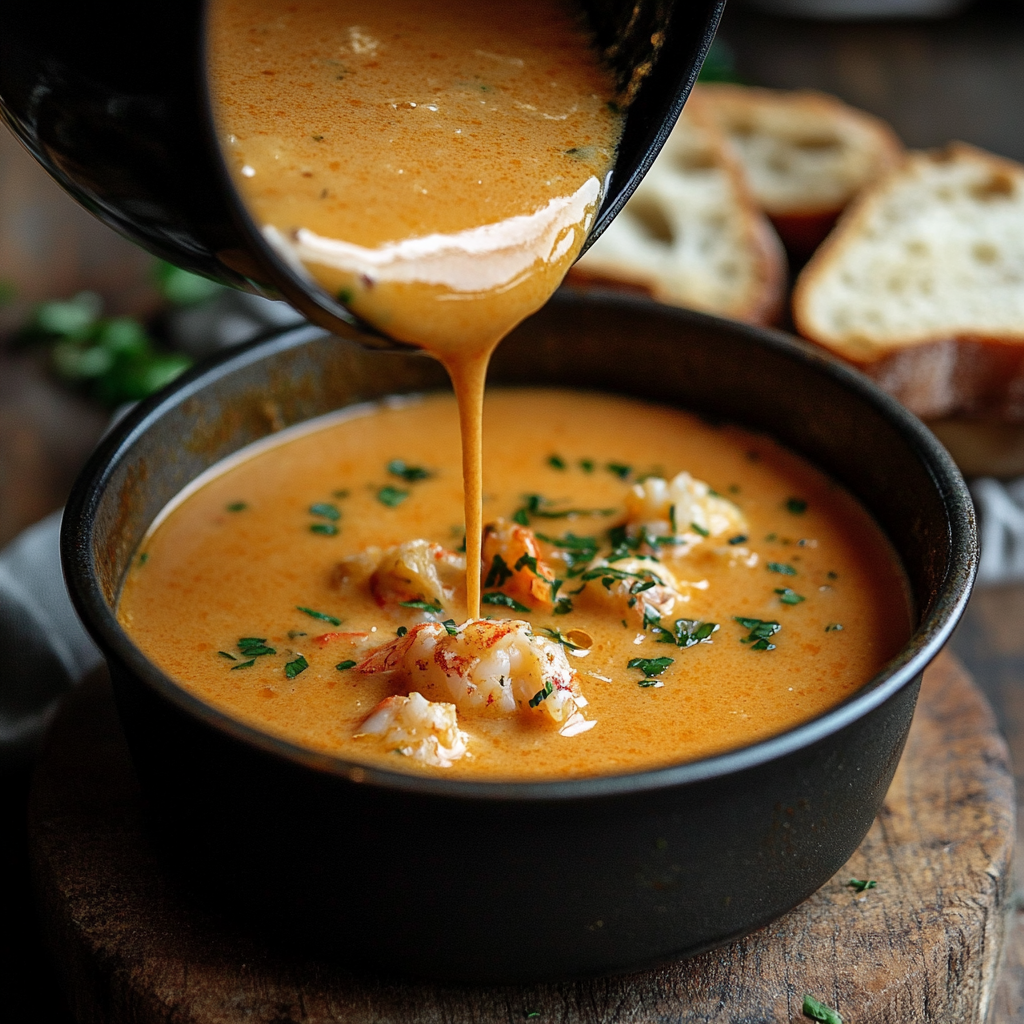
To make authentic she-crab soup, follow these steps:
-
Sauté the Vegetables: In a large pot, sauté onions and celery until softened. Sautéing the vegetables in butter or oil helps to develop their flavors and creates a base for the soup. Cook the vegetables over medium heat until they are tender and slightly translucent.
-
Create a Roux: Melt butter and whisk in flour to create a roux. A roux is a mixture of fat and flour that is used to thicken sauces, soups, and stews. Cook the roux over medium heat until it is lightly golden and has a nutty aroma.
-
Add Liquids: Gradually add milk, cream, and seafood stock, stirring constantly. Adding the liquids gradually helps to prevent the formation of lumps in the soup. You can also use a whisk to help incorporate the liquids into the roux.
-
Season: Add Old Bay seasoning, Worcestershire sauce, and a pinch of nutmeg. These seasonings add depth of flavor to the soup and complement the sweetness of the crab meat. Nutmeg adds a warm, slightly sweet flavor that pairs well with the richness of the cream and crab roe.
-
Add Crab Meat and Roe: Gently stir in the crab meat and crab roe, if available. Adding the crab meat and roe towards the end of cooking prevents them from becoming tough and rubbery. Be sure to stir the soup gently to avoid breaking up the delicate lumps of crab meat.
-
Serve: Garnish with fresh chives and a squeeze of lemon. You can also serve the soup with oyster crackers or crusty bread for dipping. For a heartier meal, pair the soup with a side salad or a grilled cheese sandwich.
Variations and Customizations
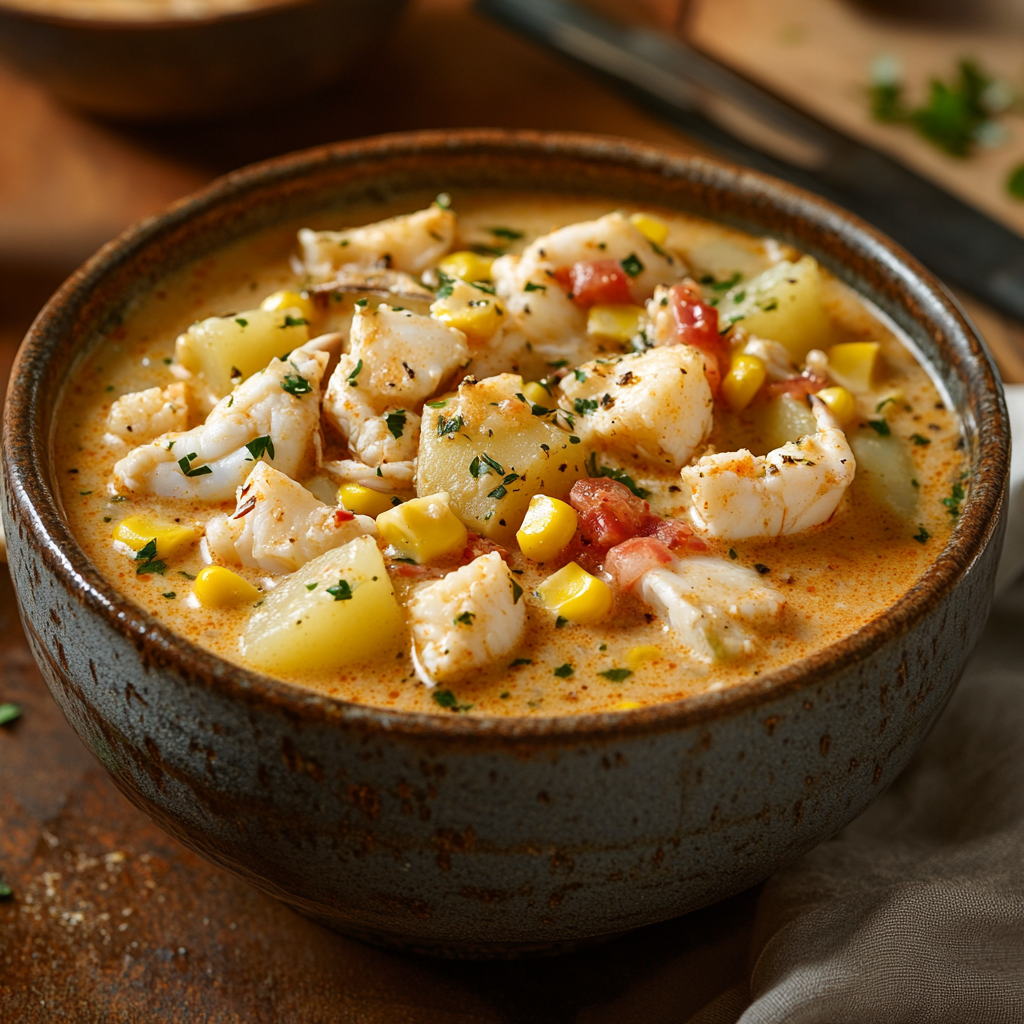
Crab soup is incredibly versatile and can be customized to suit your tastes:
-
Add Vegetables: Include corn, peas, or green beans for added texture and nutrition. Adding vegetables to the soup not only enhances its nutritional value but also adds color and texture. You can use fresh, frozen, or canned vegetables, depending on what you have on hand.
-
Make it a Chowder: Add potatoes and cream to create a hearty chowder. A chowder is a thick, creamy soup that typically contains potatoes, onions, and cream. Adding potatoes to the soup makes it more filling and satisfying. You can use any type of potato, but waxy varieties like Yukon Gold or red potatoes hold their shape better in soups.
-
Spicy Variations: Add hot sauce or red pepper flakes for a spicy kick. If you prefer a spicier soup, you can add hot sauce or red pepper flakes to taste. You can also use a spicy sausage, such as andouille or chorizo, to add heat and depth of flavor to the soup.
-
Seafood Additions: Include shrimp, scallops, or other types of seafood for added protein and flavor. Adding other types of seafood to the soup can enhance its flavor and nutritional value. Be sure to add the seafood towards the end of cooking to prevent it from becoming tough and rubbery.
-
Creamy Tomato Base: For a unique twist, combine cream and tomatoes to create a rich and tangy base. A creamy tomato base adds a tangy flavor to the soup and complements the sweetness of the crab meat. You can use canned tomatoes or fresh tomatoes, depending on what you have on hand.
Tips for Cooking Crab Soup
To ensure your crab soup turns out perfectly every time, follow these tips:
-
Simmer Gently: Avoid boiling the soup, as this can toughen the crab meat. Simmering the soup gently allows the flavors to meld together without overcooking the delicate crab meat. Be sure to stir the soup occasionally to prevent it from sticking to the bottom of the pot.
-
Avoid Overcooking: Add the crab meat towards the end of cooking to prevent it from becoming rubbery. Overcooking crab meat can cause it to become tough and lose its delicate flavor. Be sure to add the crab meat to the soup just before serving and heat it gently until warmed through.
-
Storage and Reheating: Store leftover soup in the refrigerator for up to three days. Reheat gently on the stovetop, adding a splash of milk or cream if needed to restore consistency. To store leftover soup, allow it to cool to room temperature before transferring it to an airtight container. Reheat the soup over low heat on the stovetop, stirring occasionally, until warmed through.
-
Freezing: Crab soup can be frozen for up to two months. Thaw overnight in the refrigerator before reheating. To freeze crab soup, transfer the cooled soup to an airtight container or freezer-safe bag. Label the container with the date and freeze for up to two months. Thaw the soup overnight in the refrigerator before reheating.
-
Consistency: For a thicker soup, create a roux with butter and flour before adding liquids. If you prefer a thinner soup, you can omit the roux or use less flour. To adjust the consistency of the soup, you can add more liquid, such as broth or cream, or thicken it with a cornstarch slurry.
Nutritional Information
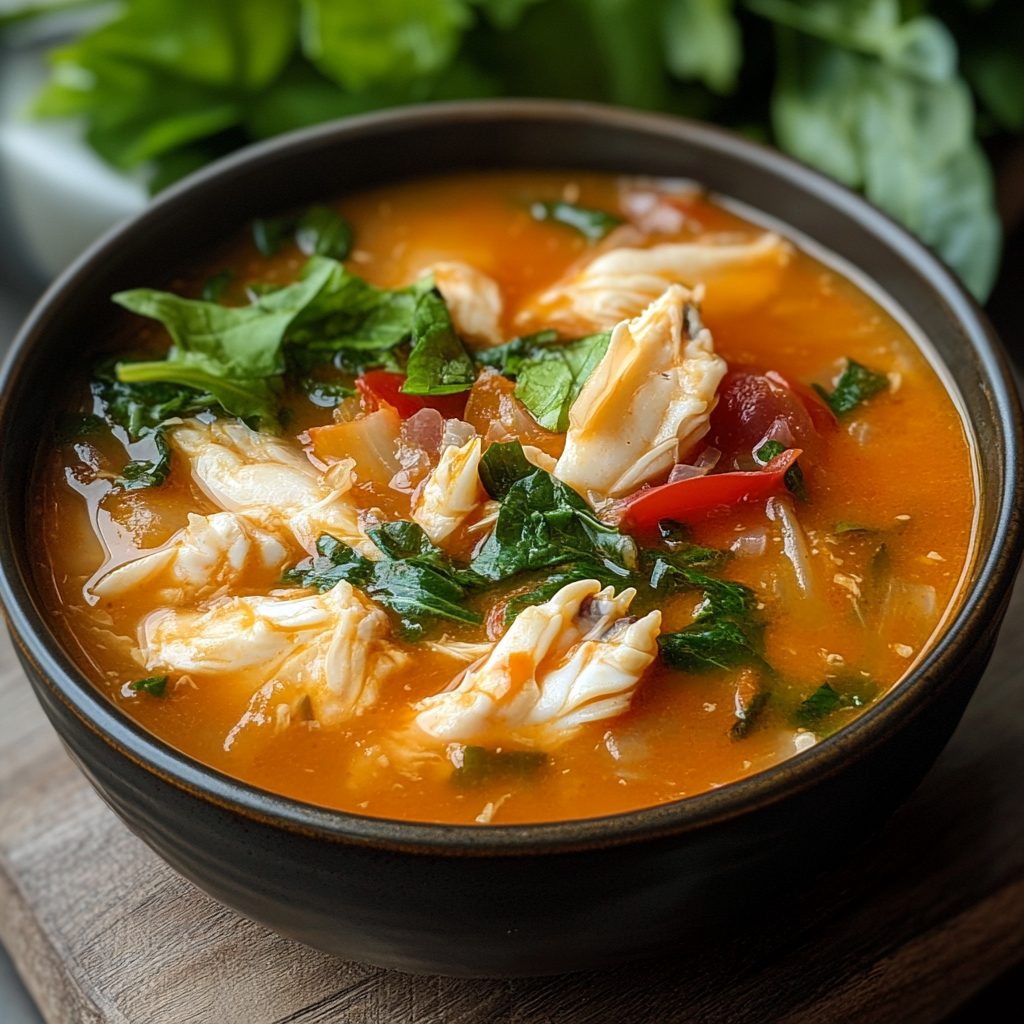
Crab soup is not only delicious but also nutritious:
-
Caloric Content: The caloric content of crab soup varies depending on the ingredients used. Cream-based soups will be higher in calories than broth-based versions. To reduce the caloric content of the soup, you can use low-fat milk or a combination of milk and broth instead of heavy cream.
-
Nutritional Benefits: Crab meat is a excellent source of protein, omega-3 fatty acids, and essential minerals like zinc and selenium. Omega-3 fatty acids are important for heart health and brain function, while zinc and selenium support the immune system. Crab meat is also low in calories and fat, making it a healthy addition to your diet.
-
Healthy Substitutions: To reduce calories, use low-fat milk or a combination of milk and broth instead of heavy cream. You can also use low-sodium broth or stock to control the saltiness of the soup. To add more vegetables to the soup, consider adding spinach, kale, or other leafy greens.
FAQs
-
Can I use canned crab meat?
- Yes, canned crab meat can be used, but fresh crab meat offers superior flavor and texture. If you choose to use canned crab meat, be sure to drain it well before adding it to the soup. You can also rinse the canned crab meat to remove any excess sodium.
-
How do I store leftover crab soup?
- Store leftover soup in an airtight container in the refrigerator for up to three days. To store leftover soup, allow it to cool to room temperature before transferring it to an airtight container. Be sure to label the container with the date and store it in the refrigerator for up to three days.
-
Can I freeze crab soup?
- Yes, crab soup can be frozen for up to two months. Thaw overnight in the refrigerator before reheating. To freeze crab soup, transfer the cooled soup to an airtight container or freezer-safe bag. Label the container with the date and freeze for up to two months. Thaw the soup overnight in the refrigerator before reheating.
-
What can I serve with crab soup?
- Crab soup pairs well with crusty bread, oyster crackers, or a side salad. You can also serve the soup with a grilled cheese sandwich or a crab cake for a heartier meal. For a lighter option, pair the soup with a mixed greens salad dressed with a tangy vinaigrette.
-
How spicy should crab soup be?
- The spiciness of crab soup is a matter of personal preference. Adjust the amount of hot sauce or red pepper flakes to suit your taste. If you prefer a milder soup, you can omit the hot sauce or red pepper flakes altogether. For a spicier soup, add hot sauce or red pepper flakes to taste.
Conclusion
Crab soup is a delightful and versatile dish that showcases the rich flavors of crab meat. Whether you prefer a classic Maryland crab soup or a creamy she-crab soup, this guide provides everything you need to create a perfect bowl every time. Experiment with different ingredients and techniques to make the recipe your own, and enjoy the comforting taste of coastal cuisine in your own kitchen.
For another hearty soup option, check out our old-fashioned vegetable beef soup recipe. If you’re in the mood for a comforting classic, try our mastering the ultimate pastina soup recipe. Explore more seafood recipes with our baked stuffed shrimp recipe.
Happy cooking!
